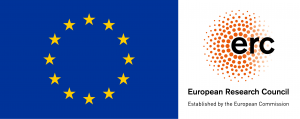Theses
NeMoSanctI’s team members are active in the dissemination of their research among university students. Especially thanks to our yearly seminars at the University of Turin, a number of BA and MA students get in touch with us, and some of them find our work so interesting that they decide to elaborate their final dissertation under our direction. We are proud to help them move their first steps in the field of research and happy to dialogue with them about NeMoSanctI’s subjects of study!
Here you can find the abstracts of some of the best dissertations discussed by our students.

Alessandro Agnese, Lo spettro digitale di Santa Claus
Thesis for the obtention of the Laurea Magistrale in Comunicazione e Culture dei Media, discussed on academic year 2018/2019
Thesis director: Jenny Ponzo
Through the use of narratological theories, the paradigms of communication and philosophical and sociological studies on the concept of god and on the ways of communicating with a transcendent world, this work analyzes how smart mobile devices changed the communication between Santa Claus and people celebrating him to show how this new form of communication has altered the user perception of the legendary figure of Santa and Christmas itself. After highlighting the consequences of the continuous interaction with mobile devices, we are going to scan in a semiotic perspective some Christmas apps on the market in order to show that smart devices changed the way people experience the Christmas Spirit. In its final part, the work examines the various possible changes that the myth of Santa will face following the spread of artificial intelligence and the digital immortality.

Francesco Capuano, La costruzione del mito di Michael Jordan nei testi biografici: analisi semiotica
Thesis for the obtention of the Laurea Magistrale in Comunicazione e Culture dei Media, discussed on academic year 2020/2021
Thesis director: Jenny Ponzo
Michael Jordan is one of the most known figures globally. His name is worshipped by sportsmen. During the 1980s and 90s he renewed the NBA and made basketball famous overseas. He helped Nike to be a leader industry. He is the object of a real cult of personality, and the causes can’t be just his sporting results. This work wants to find the reasons of the origin of Michal Jordan’s myth through the analysis of two biographies about him. These texts are Michael Jordan – The life, written by the journalist and professor Roland Lazenby, and the graphic novel Michael Jordan – Bulls on parade by the cartoonist Roland Santiago.
The research uses some semiotic tools, like Greimas’ narrative program, to identify the most important values in Jordan’s life. The value of Family and the one of Victory are the two most significant. Moreover, myth theories such as Roland Barthes’ and Peppino Ortoleva’s allow us to understand how an athlete can be considered a myth. Michael Jordan, in this sense, is described both like a God and a human. He is pure and at the same time he is dark. He is familiar, but he’s also unknown. From the analysis of the texts, it comes out that some moments of his life have particularly contributed to the birth of his myth. The figure of his father, the partnership with Nike, the strong presence within mass culture, the predisposition to the creation of anecdotes, his sporting achievements: all of these are some of the reasons why he became a pop icon and a myth. Finally, the analysis highlights how Michael Jordan is an active subject in the construction of his own image.

Elena Ceccarelli, Rapporto e incontri tra simboli, iconografie, rivestimenti vestimentari e cattolicesimo
Thesis for the obtention of the Laurea Triennale in Scienze della Comunicazione, discussed on academic year 2020/2021
Thesis director: Jenny Ponzo
The relationship between the clothing sector and religion has always been viewed with skepticism and even today the two areas are considered distant, but their connection has always existed, and can be studied by applying a semiotic method. In particular, both fashion – understood as High Fashion – and the Catholic Church have rules, and liturgical clothes respond to codes that form a grammar of meanings. Clothing is a way to communicate in both fields. For instance, communication takes place through the majesty of the clothes, which in one case shows the designer’s work, and in the other the authority of the religious character and the importance of the religious message. Another common element is the interest in novelty, for the ever new which in religion has to be read as a sense of rebirth. However, the study of this relationship must also include the limit beyond which a dress or an accessory stops appearing simply inspired by Christian iconography and enters into the sphere of blasphemy.

Beatrice Coda, Tre casi di modellizzazione e comunicazione della santità femminile: Giulia Gabrieli, Chiara Corbella Petrillo e Natuzza Evolo
Thesis for the obtention of the Laurea Magistrale in Comunicazione e Culture dei Media, discussed on academic year 2020/2021
Thesis director: Jenny Ponzo
Holiness is a complex process, studied by several liberal arts. It is a dynamic phenomenon that changes on the basis of social and cultural developments and that involves both “external and passive” and “internal and active” acts: it is the future saints who first propose themselves as “candidates” to embody a model of life by releasing writings, autobiographies, diaries, letters, and recently also television and radio interviews which have become concrete proof of their achievements. Through these communication media they present themselves to the community and demonstrate that they are exemplary figures and witnesses of their faith.
An obvious question arises: which are the communicative processes and strategies they put in place? Through their written and oral testimony they create a narrative: they often describe themselves as characters and heroes (in Proppian terms) who, often due to a lack or a damage, have to fulfil a mission facing threats, difficulties and dangers in order to reach the object of value that is holiness. Reasoning in terms of Jakobson’s theory, their communication is characterized by a conative function: it persuades and seduces the readers or the viewers to trust in their testimony, it leads them to believe that this kind of lifestyle as well as this vision of reality and of the world is the correct one, the one that comes closest to God and therefore to perfection. From this perspective, the communication carried out by (future) saints resembles the one which can be found in advertising.
Based on these premises, the main aim of this work is to analyze three figures of women and presumed future saints: Giulia Gabrieli (1997-2011), Chiara Corbella Petrillo (1984-2012) and Natuzza Evolo (1924- 2009). Through their testimonies they give the community three types of female models by releasing the image of what a woman must be like in the contemporary era. Specifically Giulia Gabrieli, by implementing a communication aimed at young people, becomes an icon of the perfect teenage daughter; Chiara Corbella
Petrillo, renouncing abortion and sacrificing her own existence for her children, becomes an icon of motherhood; while Natuzza Evolo implements a narrative where she releases the idea that a woman must be a mother, aunt, sister and wife caring for the others, thus becoming an icon of self-sacrifice.
The language used by these figures also implements a reversal on the concept of death, pain and illness which are described as positive acts, necessary to demonstrate the relationship with God and the life purpose which corresponds to sacrifice: Giulia and Chiara through their disease sacrifice their own body to demonstrate to the community the greatness of God; Natuzza through the stigmata as well as bodily and spiritual pain sacrifices her own existence offering herself as a means to atone for human sins. Their communicative purpose is to convince the recipient on one hand to see their vision of reality as the correct one since it approaches the will of God, on the other hand that they are ideal figures who must be emulated by the community, and therefore worthy of the title of holiness

Margherita Ferrero, Santa Margherita da Cortona: analisi semiotica della rappresentazione del corpo in agiografie di epoche diverse
Thesis for the obtention of the Laurea Magistrale in Comunicazione e culture dei media, discussed on academic year 2022/2023
Thesis director: Jenny Ponzo
The thesis analyzes the figure of Margherita da Cortona, in whose life is clearly present the dualism between earthly life and the search for the divine, which is expressed in the relationship with the body, considered at the same time an obstacle and a means for spiritual elevation. The focus of the research is on the role of the body in sanctity, showing the differences between male and female examples, expressed in their models of sanctity, in their ways of preaching and their hagiographical representations. After presenting the themes that emerge from the analysis of the story, specific episodes are examined to highlight the similarities and differences in dealing with these themes in four texts of different eras and purposes.

Francesco Pentenero, Le principali fonti agiografiche della canonizzazione di Catherine Tekakwitha, prima santa nativa americana. Uno studio semiotico.
Thesis for the obtention of the Laurea Magistrale in Comunicazione e culture dei media, discussed on academic year 2022/2023
Thesis director: Jenny Ponzo
This master’s thesis examines the principal and more ancient hagiographic narratives about Catherine Tekakwitha, a young Mohawk woman who was canonized as a Catholic saint in 2012. Based on two texts written at the end of XVII century by Jesuit priests Claude Chauchetière and Pierre Cholenec, the study employs semiotic tools to explore how these historical sources construct a narrative of sanctity about Tekakwitha. Firstly, the research investigates themes such as persecution, penance, virginity and miracles attributed to Tekakwitha in order to analyze the semiotic strategies employed to officially prove her sanctity. It also contextualizes the narratives about Tekakwitha within the broader tradition of Catholic hagiography and delves deeper into their relationships with discourses about Catholic, Native American and European identities. Secondly, it clarifies the dynamics of narratives about Tekakwitha within the Catholic and Iroquois semiospheres, explaining the new relationships within the cultural landscape of North America.

Chiara Petrini, Catholic practices during Coronavirus: between the domestic and the media dimension
Thesis for the obtention of the Laurea Magistrale in Comunicazione e, discussed on academic year 2019/2020
Thesis director: Francesco Galofaro
Coronavirus did not erase religious practices from Christians life. However, it deeply changed the way of experiencing said practices. First of all, with the suspension of ordinary masses, there is a necessary transition from a community practice to an individual one. “Eucharist is the fount and apex of the whole Christian life”, and so its sacramental form is lacking. Coronavirus has spread among people a sense of bewilderment, generated by the loss of loved ones, suffering from the disease and social isolation.
For Christian people, there is also the pain of not being able to celebrate Easter in church. In this context, clergy tried to rekindle faith and keep it alive. The impossibility of participating in the mass obliges the believer to approach God again through new tools, and this distance is overcome by medial technologies. Even old and not technology savvy priests questioned themselves in order to keep performing their pastoral activity.
Facebook represents a significant example: a lot of priests posted their masses online, causing several results. The media action by Church officials has modified the religious semiosphere, causing a sudden and unexpected change that Jurij Lotman (1993) would call an explosion, generated by the creative activity of religious phenomena online.
In this way, Facebook direct becomes part of religious dynamics, and also the mass has to adapt losing its original specificity. Virtual spaces (Social media ones), undergo a process of sacralization with the broadcast of online masses, in which spiritual communion – an alternative way to join God – can be received without the sacramental form.
Through media experience of online mass, Christian people had to re-semantise the domestic space, selecting a portion of it in which they recreated a church inside the house, recalling the ancient concept of domestic church. In this way, media experience is factual, inasmuch medial discourse is perceived in continuity with the believer’s daily life; but this is also a participatory communication, because discourse is perceived as a space of interaction between the worshippers and the priest.
Analyzing some Facebook directs, it can be seen that two different grammars come into conflict: the formal one of liturgy, which signifies solemnity; and the informal one of social media, which is based on entertainment. In this way several results are produced in relation to factors such as the competence of the user-priest or the utterance choices about presenting the event.

Erica Traunero, Chiesa e Cura della Casa Comune: il discorso ecologista di Papa Francesco
Thesis for the obtention of the Laurea Triennale in Scienze della Comunicazione, discussed on academic year 2018/2019
Thesis director: Jenny Ponzo
Abstract
This text will address the relationship between the very current and debated theme of ecology and the Church during the pontificate of Pope Francis. The topic will be deepened through the semiotic analysis of the “environmental” encyclical Laudato Sì, written by Bergoglio in 2015. After a brief presentation of the communicative style of the Pope, the second chapter will develop through the analysis of the relationships between the positions of the Pope and those of St. Francis, who inspired the name of the Pope and the title of the encyclical, focusing above all on the analogies concerning the values transmitted by the two Francis. In the third chapter will be investigated the attitudes regarding the environmental crisis of the Popes of the 20th and 21st century, starting with Pope Paul VI, up to Francis himself. The last chapter, the fourth, will be devoted to the analysis of the encyclical mainly with three semiotic tools: Greimas’s theory of Narration, the Semiotic Square and the Enunciation theory.

